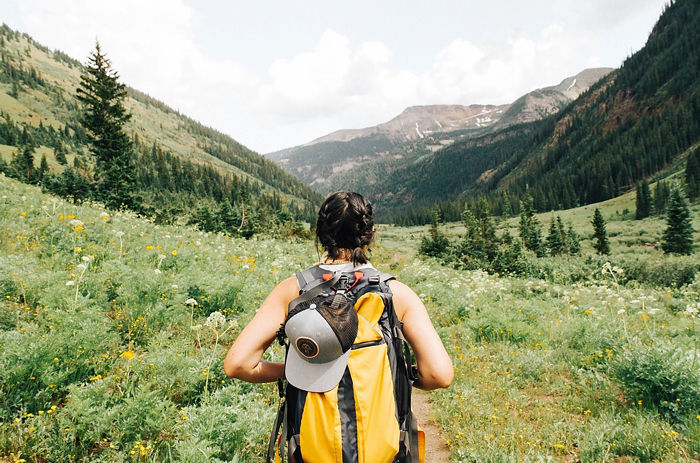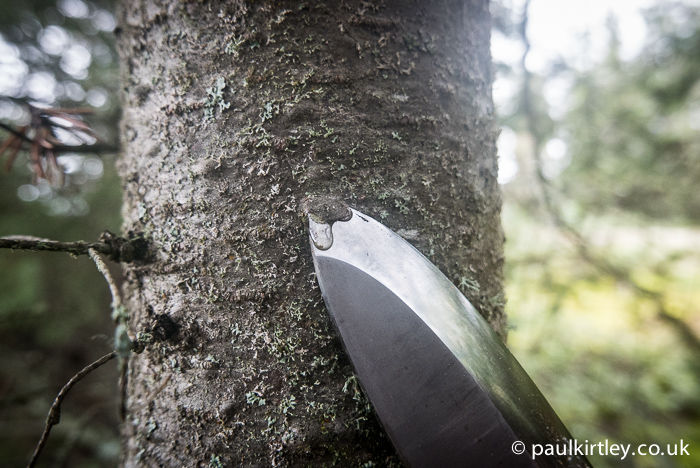
Survival skills just for backpacking? Absolutely! For ultralight backpackers, SKILLS often REPLACE GEAR, and therefore WEIGHT. If you spend any time in the wilderness, it makes sense to know you can deal with whatever comes up.
Survival means staying warm and dry, hydrated, uninjured, and finding your way out of the wilderness. Of course, eating is nice too, but not crucial if the situation is just for a few days.
So, if one of the above fails unexpectedly, here are some SURVIVAL SKILLS that are easy to learn, and will get you out of a mess:
10 Easy Survival Skills for Backpacking and Hiking
1. Put dried moss or milkweed fuzz in your pocket as you walk, so you'll have dry tinder to start a fire, just in case it's raining later. Cattail fuzz works well too, and you can experiment with different materials.
2. Hungry for a natural snack? If it looks and tastes like a blueberry, strawberry, or raspberry...it most likely is. There is no berry in North America that looks like a blueberry, strawberry, or raspberry that can hurt you from one taste test. Take a taste, and just spit it out completely if it doesn't seem right. But it can come in handy when you need a snack.
See photo below (photo credit MotherEarthNews.com).

3. Weather too COLD? Make a pile of dry leaves and dead grass to keep warm in an emergency. People have slept warmly without a blanket, in below-freezing weather, in a pile of dry grass.
4. Caught in the wilderness without a COMPASS? If you don't have anything other than the sun, you can find true North, South, East and West by PLACING STICKS IN THE GROUND and following the shadow direction. You can even try this in your backyard for fun. An easy technique like this can save you when your compass is lost or broken.
Watch how it's done:
Note: The Suunto MC-2G Navigator Compass (shown in the video) features a patented Global Needle that functions flawlessly anywhere in the world.
5. Too many BUGS bugging you? It's helpful to know a few things that keep biting insects off of you. Seek out windy spots. Apply mud to exposed skin. Rub flakes of birch bark on your skin and clothing—the oil repels bugs.
Mosquitos are attracted to wet and dark-colored clothing, as well as perspiration, so avoid wearing those. They are most active at dawn and dusk, when the air is calm.
6. Watch out for BODY TEMPERATURE (too wet or cold). The biggest wilderness killer is hypothermia, and getting wet is the biggest cause. Get in the habit of watching for ledges or large fir trees to stand under when you think that rain may be coming. Learning to STAY DRY is one of the more important survival skills.
7. Fix a BROKEN SHOELACE. If your lace is too short, skip the eyelets near the toes. Just lace up the ankle and cuff of the boot to achieve a tight fit. If you lose an entire shoelace, cut the other one in half.
8. Stay HYDRATED. Get in the habit of filling your water bottles every chance you get. Then you won't have such a hard time with any long dry stretches of trail. Drink up the last of your water right before you fill the bottles, too.
9. Turn to SAP to heal a cut. Break a "blister" on the trunk of a small SPRUCE or FIR tree, and you can use the sap that oozes out as a good ANTISEPTIC dressing for small cuts. (See photo below). It also can be used to START A FIRE, and will burn when wet. Resin is flammable and makes an outstanding, fire-starting aid. (Photo credit: PaulKirtley.co.uk)

10. Need paper? Bark from a white birch tree will usually light your even when wet. In a jam, you can also use it as a paper substitute if you need to leave a note in an emergency.
The above are just a few tips and techniques you can easily do. As simple as they seem, they can make backpacking not only safer, but more interesting. Go ahead and practice one or two of these survival skills.
Be prepared, stay safe!

コメント